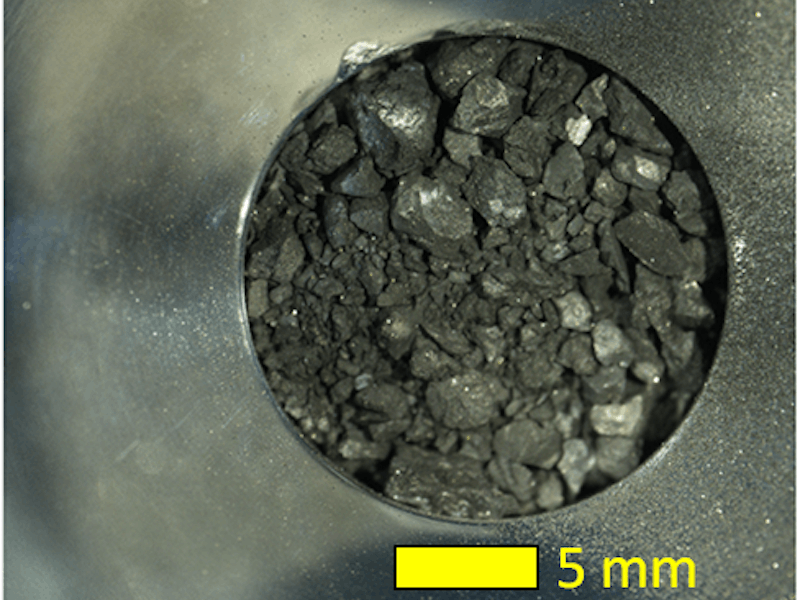Japan releases stunning first images of asteroid Ryugu samples
Wait, is that tin foil?

On December 6, a piece of an asteroid was found in the middle of the Australian desert.
But this wasn't an act of nature. It was a well-choreographed, meticulous transaction which took years of planning and execution.
Japan's Hayabusa2 spacecraft, which traveled for nearly six years in space to tag and collect a sample from asteroid Ryugu, dropped off a small capsule containing pieces of the space rock for analysis here on Earth. The Japan Aerospace Exploration Agency (JAXA) opened up the capsule last week, revealing the precious space cargo to the world for the first time. And there was a surprise in store.
JAXA released the images on its website and on Twitter.
As incredible as this moment is for science, the keen-eyed among you might notice something strange in the above image. You are not mistaken.
There's something decidedly 'off' about the rocks encased in Chamber C of the sample collection capsule.
Is this space trash?
There appears to be tin foil in it.
Here's the background — The images are the climax of the Hayabusa2 mission, which ended a five-year journey when it landed on asteroid Ryugu on February 21, 2019. The spacecraft arrived within range of Ryugu in June, 2018 and spent more than a year orbiting its rocky companion, collecting observations and images of Ryugu before its final touchdown.
The spacecraft collected a small sample of the asteroid, and dropped it off in the Woomera Prohibited Area in southern Australia. The 40-centimeter capsule landed on Earth on December 4, and the team behind the mission located and retrieved it two days later.
The capsule containing a piece of the space rock was found in the Australian desert.
After making its way to a lab in Japan, scientists finally opened the precious cargo on December 14, peering into a rare sample from the cosmos.
Why its newsworthy — Inside the capsule was only the second asteroid sample that humans have managed to get their hands on throughout history. By studying the sample, scientists are hoping that it will help them better understand the origins of the Solar System.
Asteroids formed from the very same material that formed the Solar System, and may contain clues as to how water and other biological material made their way to Earth, and sparked life as we know it.
Most of what we know about asteroids comes from meteorites, which rain down to Earth as their parent comets and asteroids pass our planet. But this material may be significantly altered by virtue of Earth's atmosphere, water or weather.
So snagging a piece of an asteroid as it flies through space provides scientists with pristine material from billions of years ago when the Solar System was in its infancy.
What's new — As seen in the images, the capsule contains small, gravely pieces of the asteroid that were collected by the Hayabusa2 spacecraft.
Many particles larger than 1mm were found in both chambers A and C.
There was a total of three capsule chambers with the asteroid samples contained inside. The samples inside Chamber C were larger than the one found in Chamber A, and the scientists behind the mission believe that the Chamber C samples were collected during the spacecraft's second touchdown on the asteroid.
Another odd finding in Chamber C is an artificial object, which appears to be some sort of tin foil.
The tiny scraps may be aluminum that scraped off the spacecraft during landing, according to JAXA. But the jury's still out on what, exactly, this scrap of material is and where it came from. It does, however, appear to be artificial and thus, potentially space trash.
What's next — Now that the capsule has been opened, scientists will spend years analyzing the samples in order to try and figure out the origins of asteroid Ryugu, as well as the origins of our own world.
It seems the spacecraft scooped up more than enough dirt for initial analysis, according to JAXA, suggesting it may hold a wealth of new information about asteroids.
This article was originally published on